Gaslight
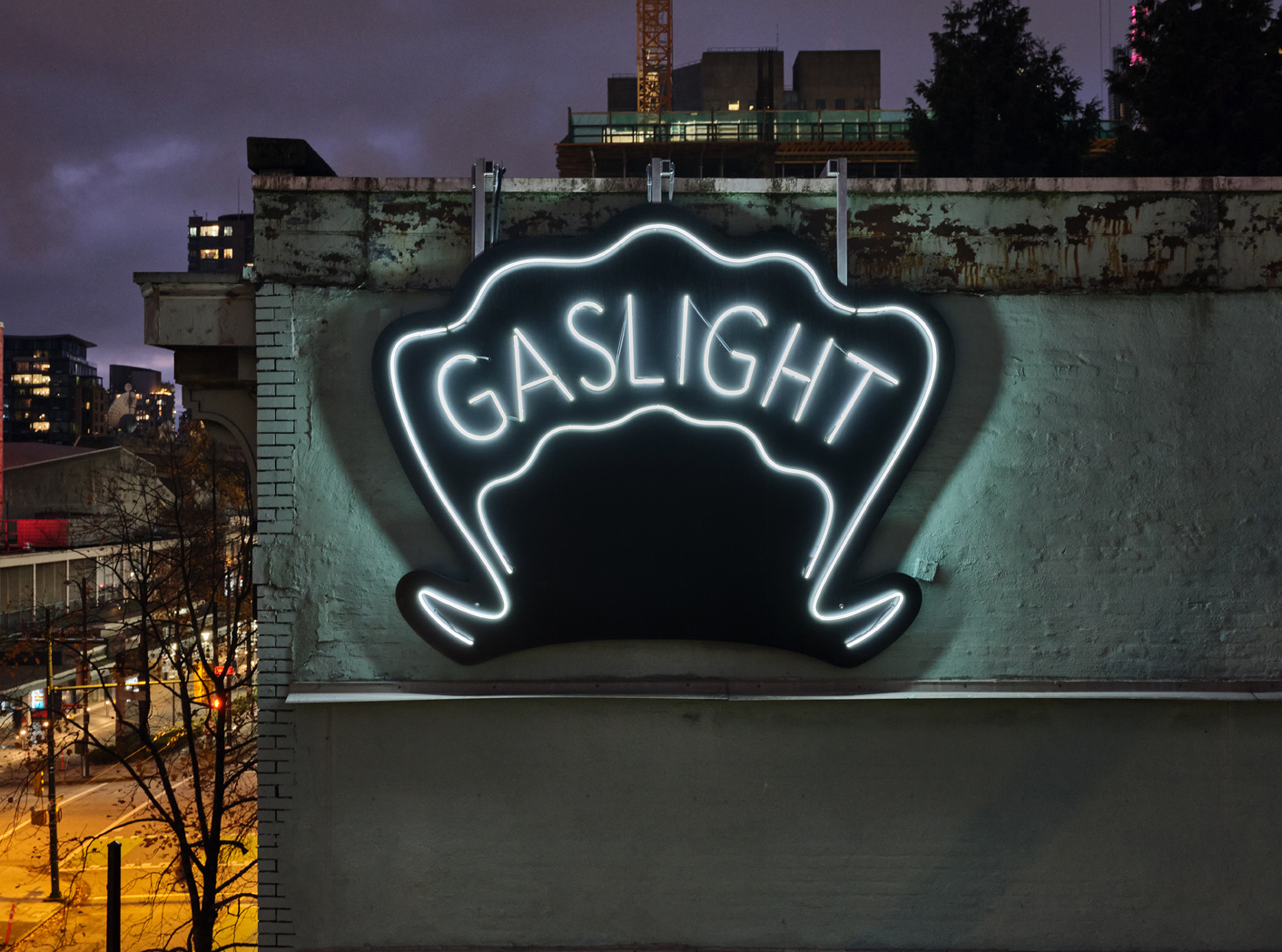
Gaslight, 2020
neon, metal, paint, 315 x 381 cm
public artwork, Vancouver, Canada
Gaslight is a neon sign designed after the title card for the 1940 film by the same name. The sign is a pun on the nature of neon as light made from gas, as well as the psychological term for manipulating one’s reality—gaslighting—a metaphor for political and media relations in this so called post-truth era. Situated in public space with the outline of the gas flame “flickering”, the sign functions as both a beacon and a warning.
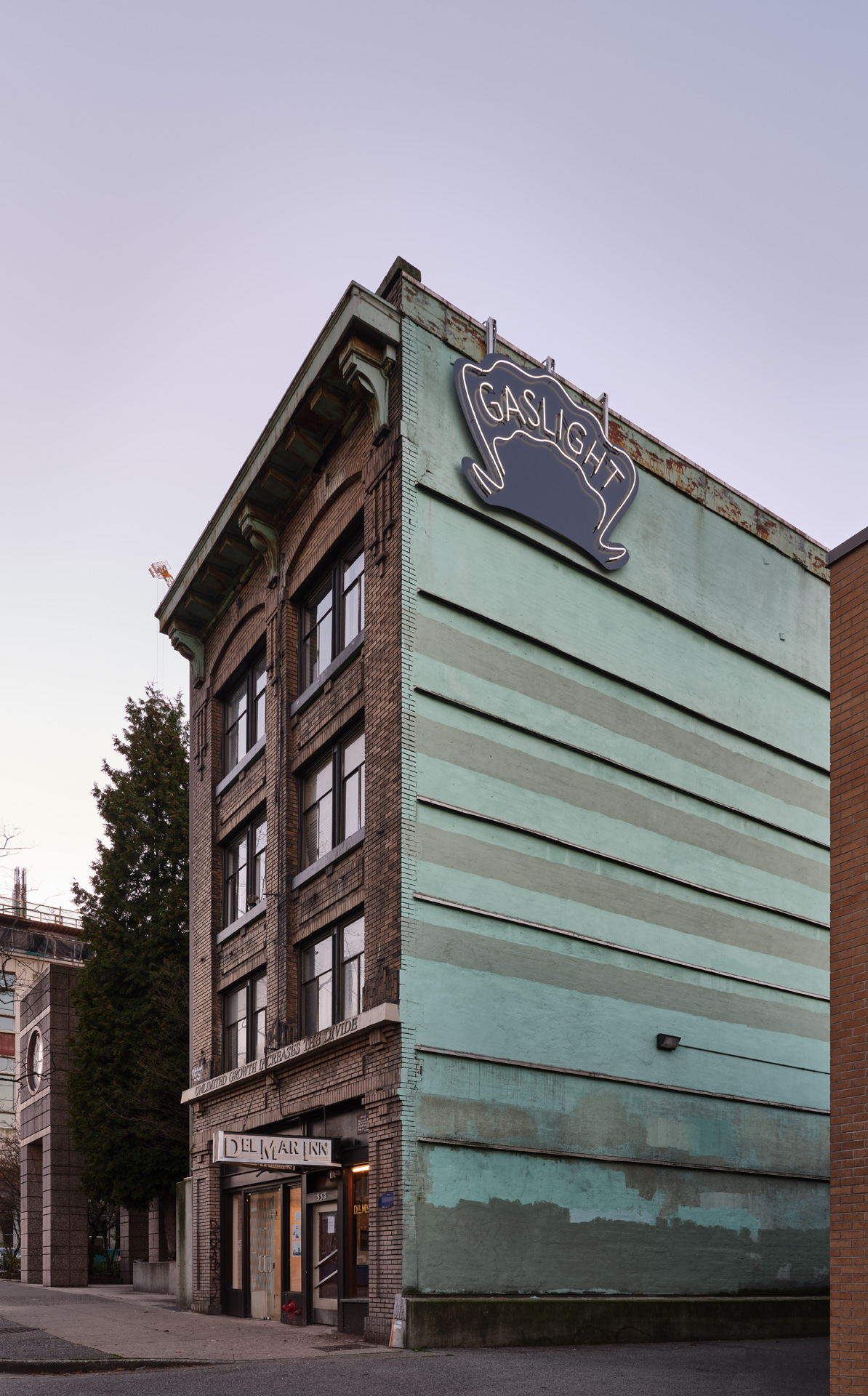
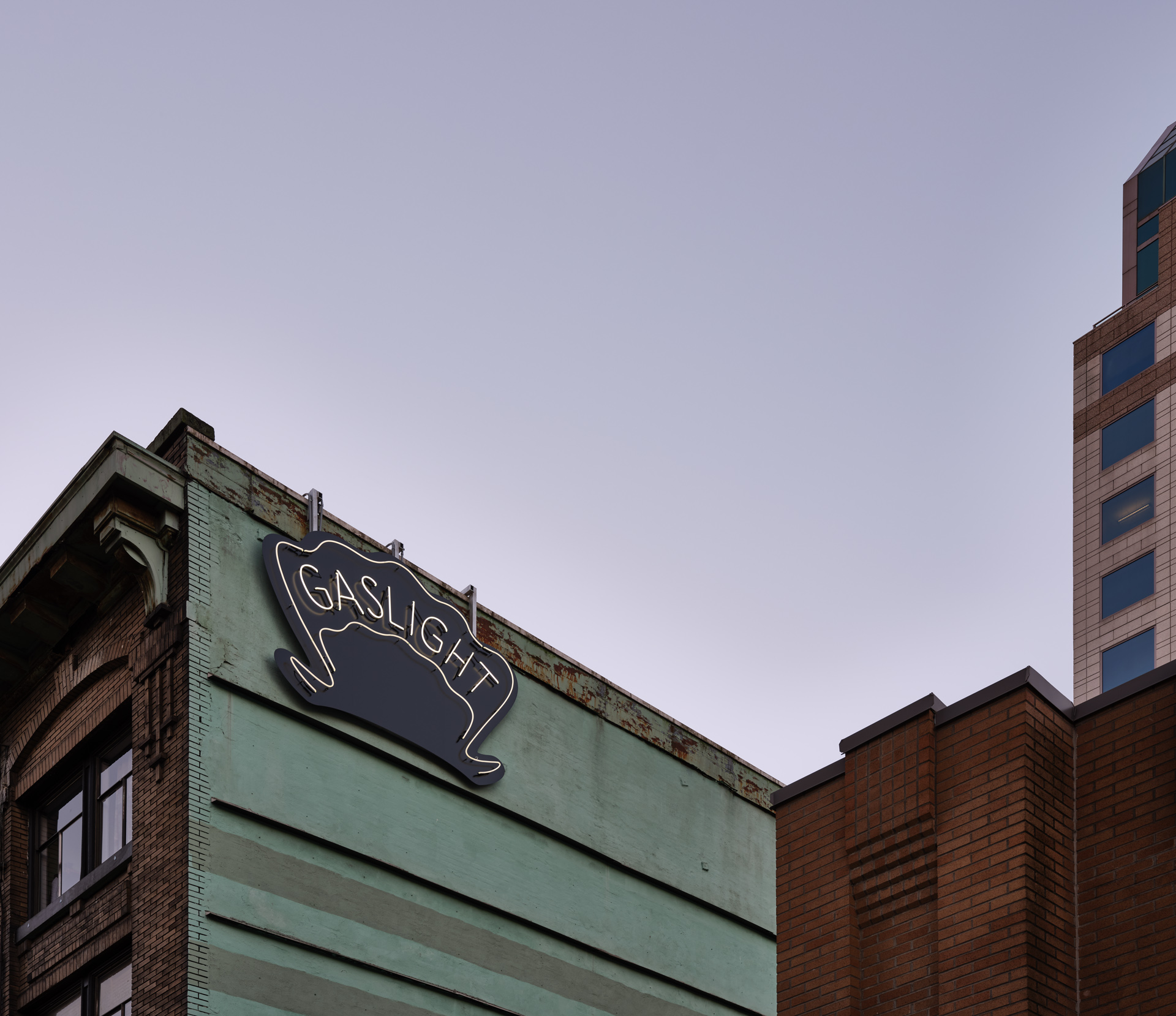
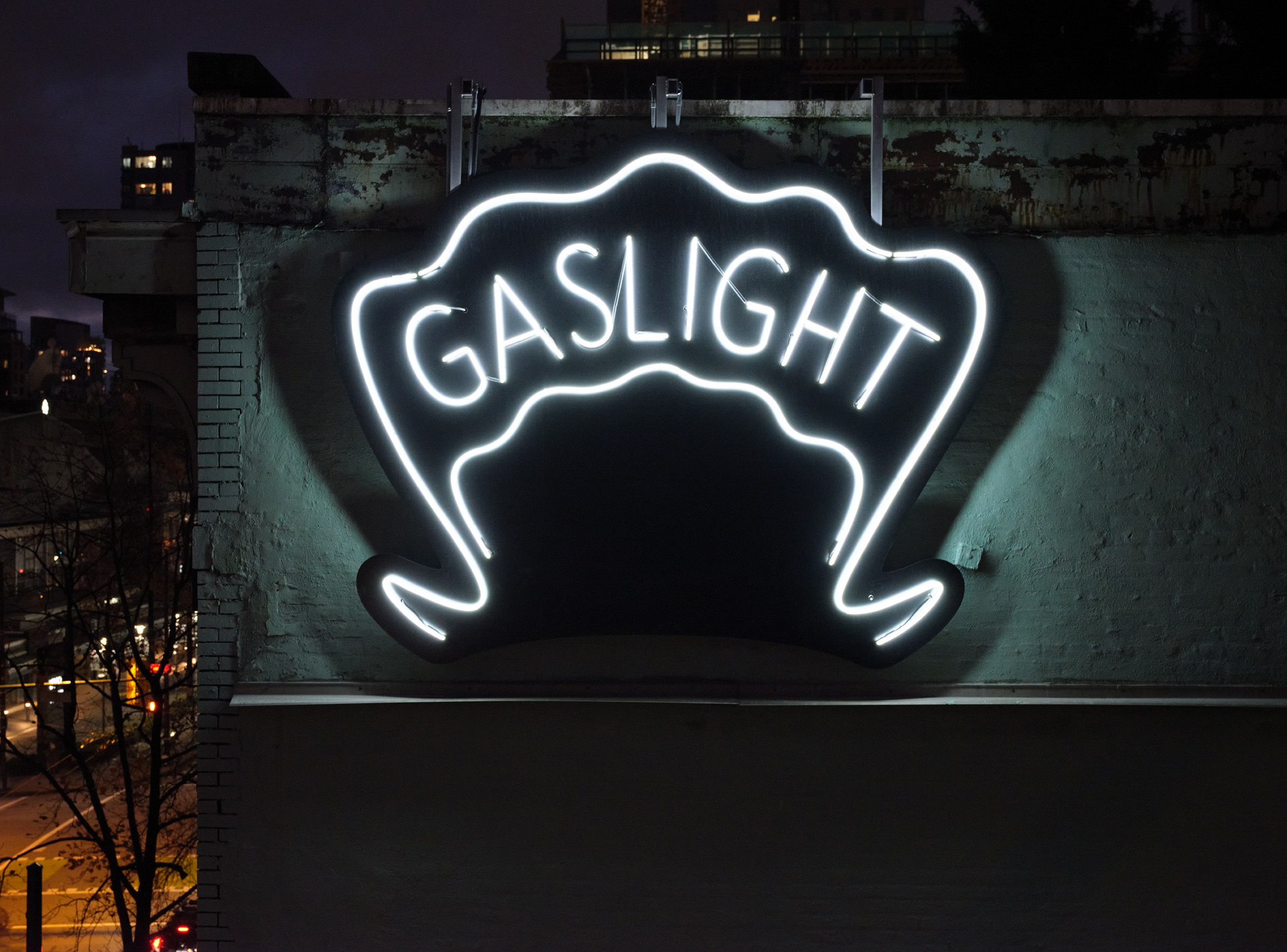
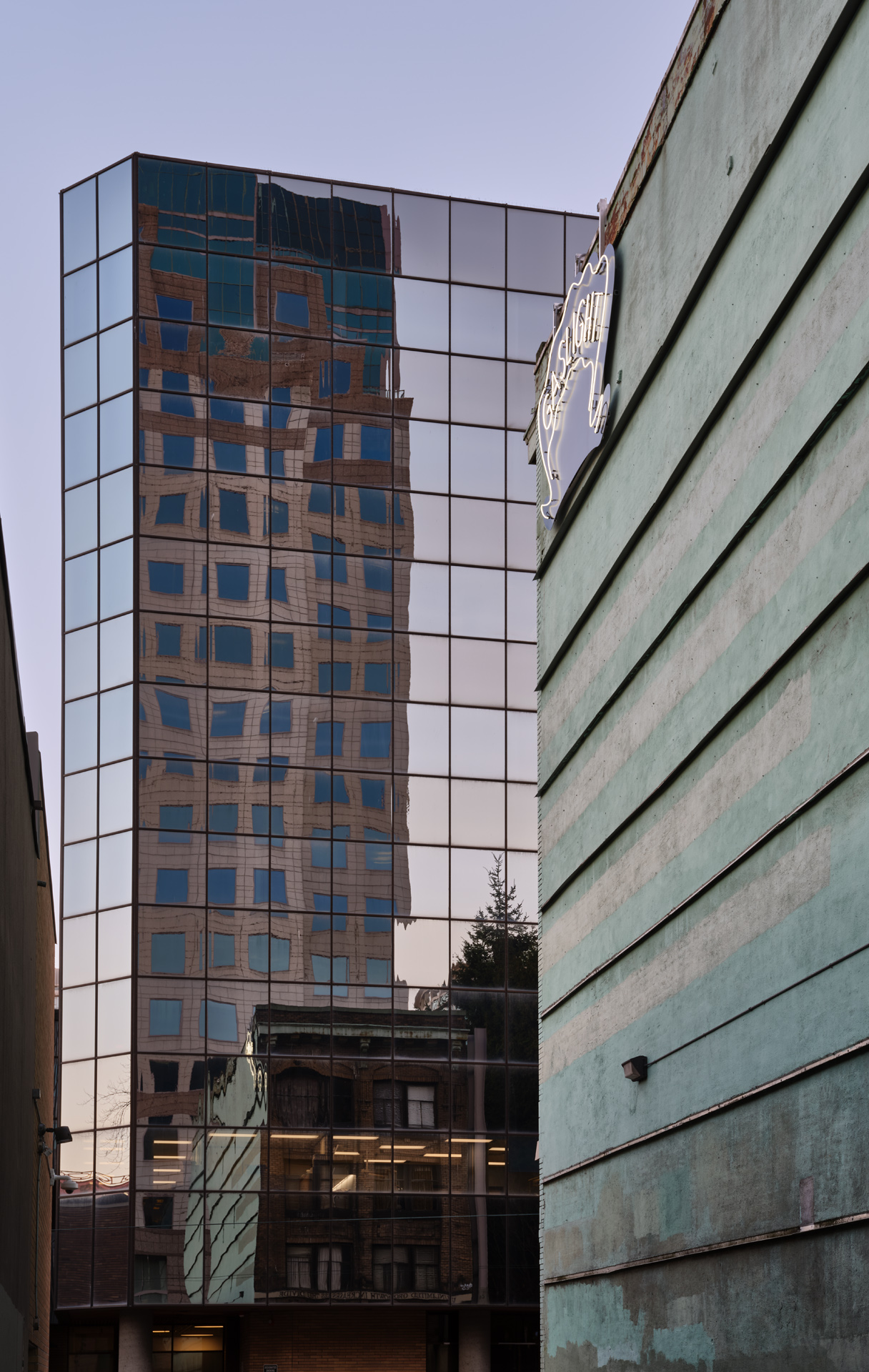
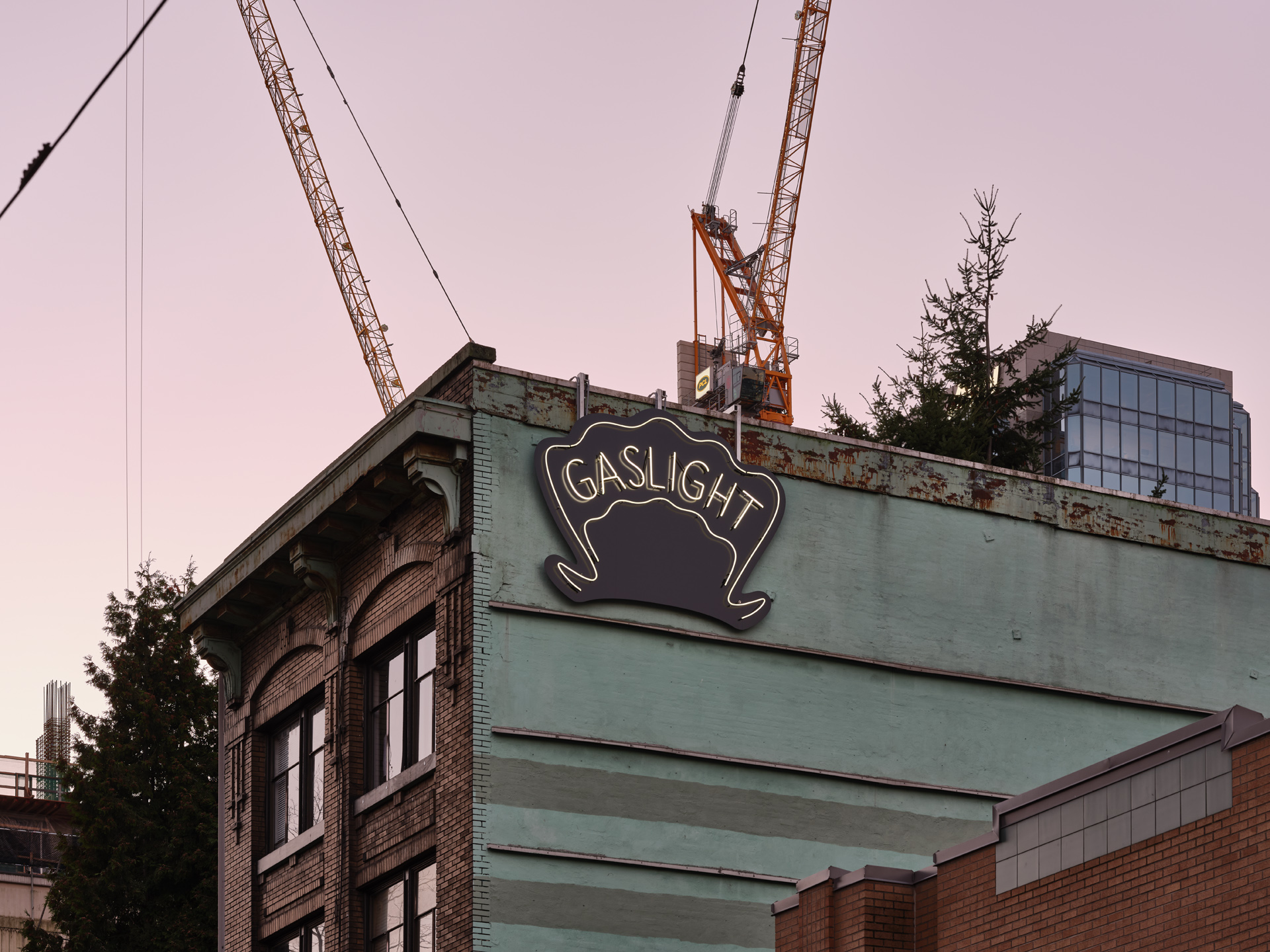
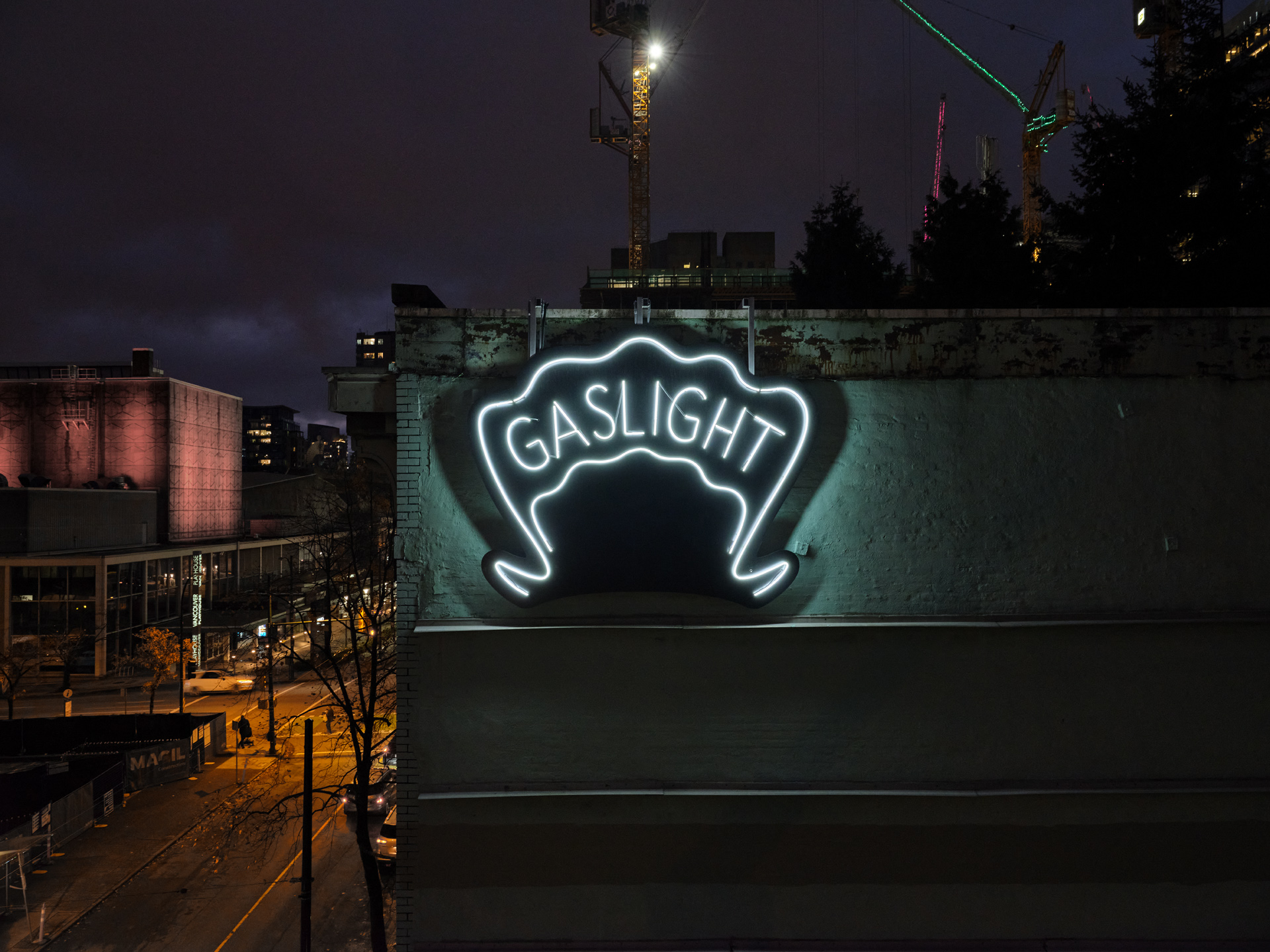

A Pair of Boots

A Pair of Boots, 2018
watercolour on paper, 144 x 106 cm
A Pair of Boots is a watercolour based on the boots found in the famous photograph of Lee Miller bathing in Hitler’s bathtub on April 30, 1945. Miller, the only female combat photographer in Europe during World War II, had photographed the Dachau concentration camp earlier that day. She then travelled to Munich, by this time under U.S. occupation, and photographed Hitler’s apartment extensively.
This watercolour isolates a key element from Miller’s photograph: her boots, which stain Hitler’s bath mat with dirt from Dachau. The composition also references Vincent Van Gogh’s painting, A Pair of Shoes, 1886, which was the centerpiece of Martin Heidegger’s essay The Origin of the Work of Art, and the subject of much debate in the discourse of 20th century aesthetics.
Mina Loy

Mina Loy, 2014
serigraph on Magnani Pescia paper, 76 x 56 cm
Mina Loy is a portrait reproduced from a 1905 photograph of Loy with her eyes closed. It is printed as a serigraph in gunmetal ink on grey paper.
Dazzle
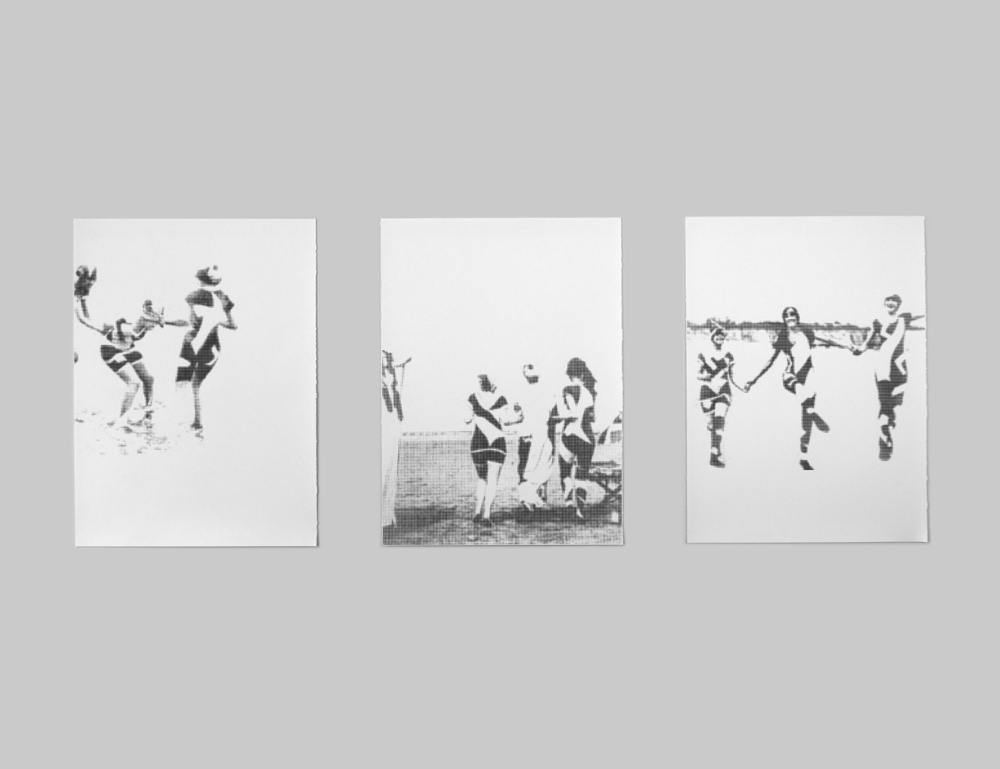
Dazzle, 2016
series of 3 serigraphs on Moulin de Couzi paper, each 76 x 56 cm
Dazzle is from a series of works that explore diverse forms of camouflage, subterfuge and encoded communication. This project examines the historical parallels and interconnected histories between war, women’s suffrage, fashion, and avant-garde moments in art, music and cinema in the early half of the twentieth century.

Disrupt
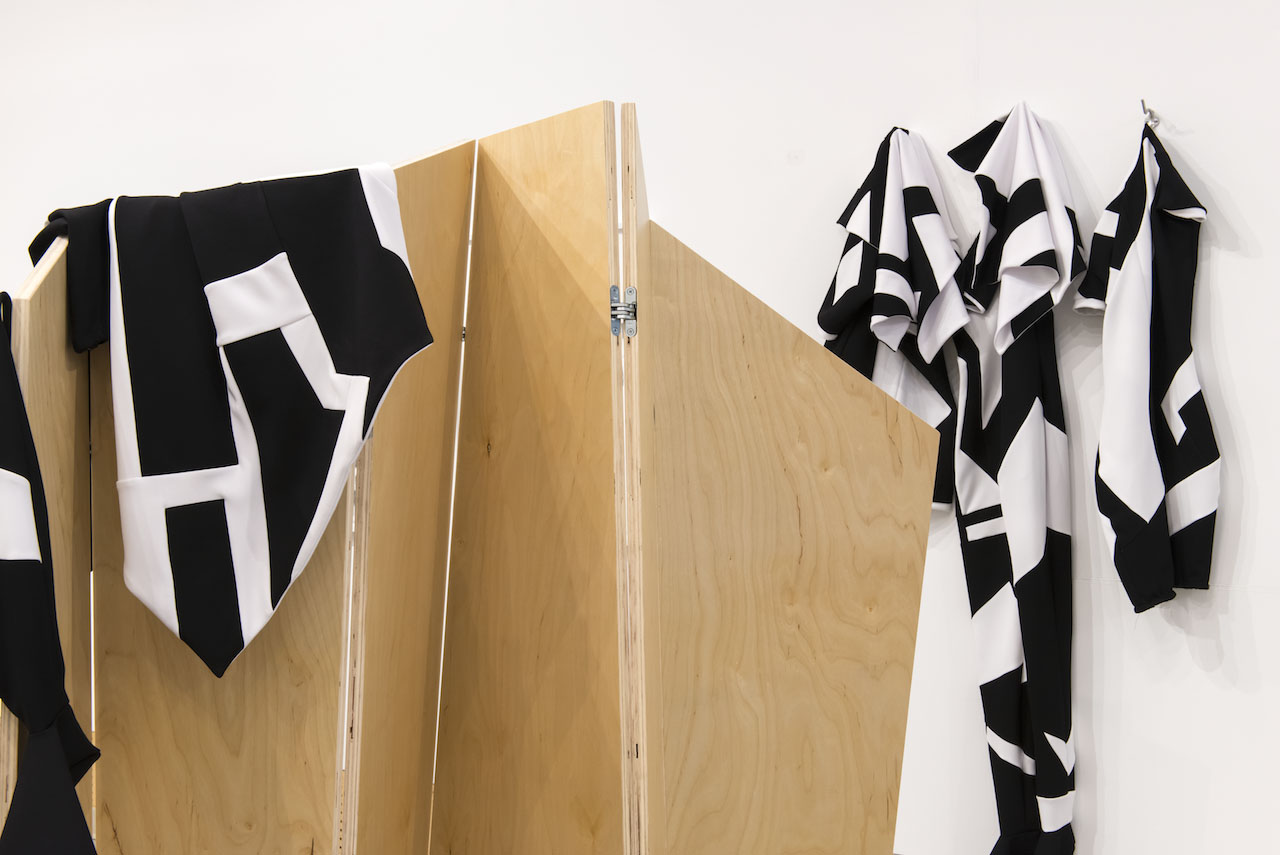
Disrupt, 2018, polyester and nylon elastane fabric, wood, metal, dimensions variable, and; Dazzle, 2016, series of 3 serigraphs on Moulin de Couzi paper, each 76 x 56 cm, photo: Scott Massey
Dazzle and Disrupt are part of an ongoing body of work investigating “dazzle” camouflage, a technique developed in the first decade of the twentieth century and used briefly on Allied naval battleships during World War I. The intent of dazzle or disruptive camouflage was not to conceal but to confuse: its graphic patterns of intersecting geometric shapes made it difficult for the enemy to estimate a target’s range, speed, and heading. In this series of works, the use of dazzle camouflage is mapped alongside contemporaneous cultural anxieties in Europe and North America about women’s increasing social, economic, intellectual and sexual freedom, and the furtive undermining of patriarchal systems and domesticity such new mobility implied.
The three serigraphic prints are taken from several degraded photographs published in New York newspapers in 1919 that depict three women modeling self-made dazzle swimwear on a beach. The corresponding garments are recreations of these swimsuits, made in collaboration with a pattern drafter, and draped over an asymmetrical dressing screen, an invitation for visitors to model them.
